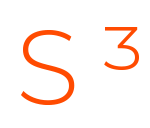Understanding Remote Workplace Dynamics: Why Engagement Matters
The Significance of Engagement in Remote Work
In the realm of remote workplace dynamics, engagement stands out as a critical factor that significantly influences productivity, morale, and overall success. When employees are engaged, they exhibit higher levels of commitment, motivation, and job satisfaction, leading to improved performance and a more positive work environment.
The Role of Communication and Connection
Effective communication and fostering strong connections among remote team members are essential components for enhancing engagement. Regular video calls, virtual team building activities, and open channels for feedback can help employees feel connected and valued, contributing to their overall engagement with the organization.
The Impact of Engagement on Employee Well-Being and Retention
Engagement in a remote work setting not only boosts productivity but also plays a crucial role in maintaining employee well-being and reducing feelings of isolation. Moreover, organizations that prioritize employee engagement are likely to experience higher retention rates, as engaged employees are more committed to their roles and the company’s mission.
Achieving Success in Remote Workplace Dynamics
Emphasizing the importance of engagement in remote work setups can pave the way for a more cohesive and productive team. By fostering a culture of trust, providing opportunities for growth, and recognizing employee contributions, organizations can create a vibrant remote work environment that promotes engagement, collaboration, and overall success.
Top Tech Tools to Enhance Remote Team Collaboration
In today’s fast-paced digital landscape, remote work has become more prevalent than ever before. As companies embrace distributed teams, the need for efficient collaboration tools has escalated. Leveraging the right tech tools can significantly enhance remote team collaboration, leading to increased productivity, seamless communication, and better project outcomes.
One standout tool that has revolutionized remote collaboration is Slack. With its real-time messaging, file sharing, and integration capabilities, Slack streamlines communication and keeps remote teams connected. Additionally, project management tools like Asana and Trello facilitate task assignment, progress tracking, and seamless workflow management, allowing teams to stay organized and focused, regardless of their physical locations.
Video conferencing tools like Zoom and Microsoft Teams have become indispensable for remote teams, enabling face-to-face interactions, virtual meetings, and screen sharing functionalities. These tools bridge the gap created by physical distance, fostering a sense of camaraderie and enhancing team dynamics.
Moreover, Google Workspace (formerly G Suite) offers a comprehensive suite of tools including Gmail, Google Drive, Docs, Sheets, and Meet, promoting seamless collaboration, document sharing, and real-time editing. By facilitating centralized access to essential resources, Google Workspace fosters teamwork and boosts remote team productivity.
To empower remote teams with effective collaboration, it’s crucial to invest in these top tech tools that cater to various aspects of communication, project management, and virtual interaction. By integrating these tools into daily workflows, organizations can overcome geographical barriers and create a cohesive environment where remote teams can thrive and deliver exceptional results.
Proven Strategies for Keeping Remote Employees Engaged
Remote work offers flexibility and challenges in keeping employees engaged. Contrary to the misconception that remote workers are less productive, studies show that they can be more efficient with the right strategies in place. One common misconception is that remote employees lack accountability, but in reality, many thrive in a results-oriented work environment.
Expert Insights (Q&A)
Q: What are the most significant misconceptions about Measuring Success: How to Track Engagement in a Remote Workforce?
A: One common misconception is that remote work makes tracking engagement more challenging. However, remote work opens up new avenues for innovative tracking methods and tools, leading to more accurate and insightful measurements.
Q: Why does Measuring Success: How to Track Engagement in a Remote Workforce matter more than most people realize?
A: Effectively measuring engagement in a remote workforce is crucial for fostering collaboration, productivity, and employee satisfaction. It enables organizations to identify strengths and areas for improvement, ultimately enhancing overall performance and success.
Q: How is Measuring Success: How to Track Engagement in a Remote Workforce likely to evolve in the coming years?
A: The future of measuring engagement in a remote workforce is likely to see advancements in AI-driven analytics, real-time feedback mechanisms, and interactive platforms that offer deeper insights into employee engagement levels. Companies will increasingly rely on data-driven approaches to optimize remote work strategies and enhance team success.












Leave a Reply